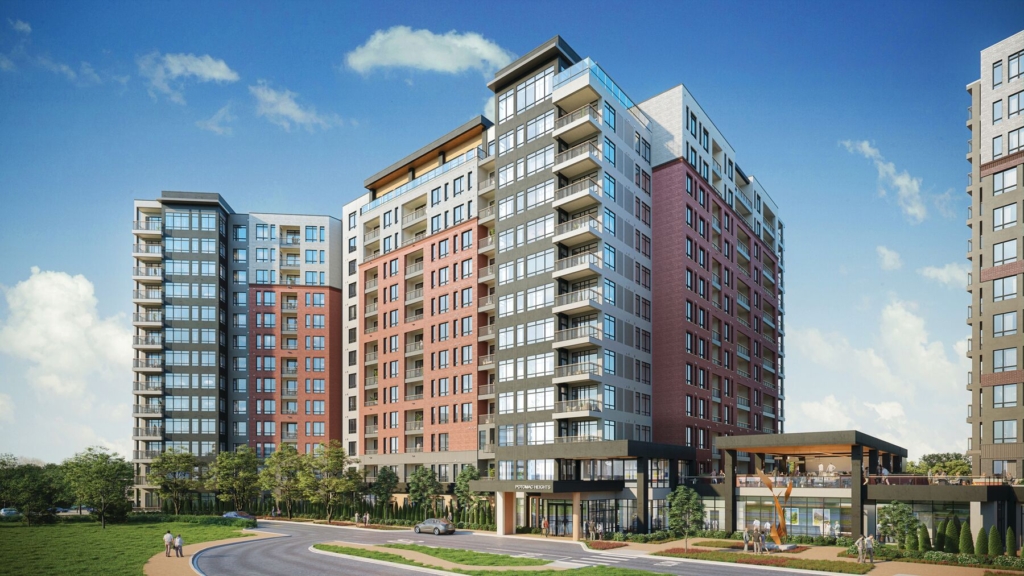
Conceptual images of the Grandview which is pending approval and subject to change. Images courtesy of Erickson Senior Living.
On the site of the former Marriott International headquarters, Erickson Senior Living is planning a new kind of addition to a bustling live-work-play environment.
The Grandview will become Erickson’s first vertical living-style continuing care community in Maryland. Set on 33 acres in North Bethesda, the development will include a cluster of buildings up to 12 stories high that contain nearly 1,000 residential units and a long list of amenities, including a swimming pool, fitness center, bocce court, dog park, full-service spa, and rooftop restaurant and wine bar. New walking trails, transportation service and covered parking will enable the Grandview’s population of active seniors to easily access restaurants, retail, entertainment venues, medical offices and other services just outside the property.
Erickson paid $104 million to acquire the site, had to postpone development for several years until a lease expired and complete a major redesign effort in order to include all the features in the Grandview that it would normally put on a larger, suburban campus.
However, Sean Sands, Executive Vice President of Real Estate and Development, says the effort was worthwhile “because we liked the location so much and we got so much positive feedback in our consumer research… We see more demand for this variation of a live-work-play environment that has more amenities nearby, is potentially walkable and is near public transportation lines.”
The project is part of Erickson’s five-year, $4-billion expansion plan to serve seniors, including the growing number of baby boomers who will soon be looking for new living arrangements.
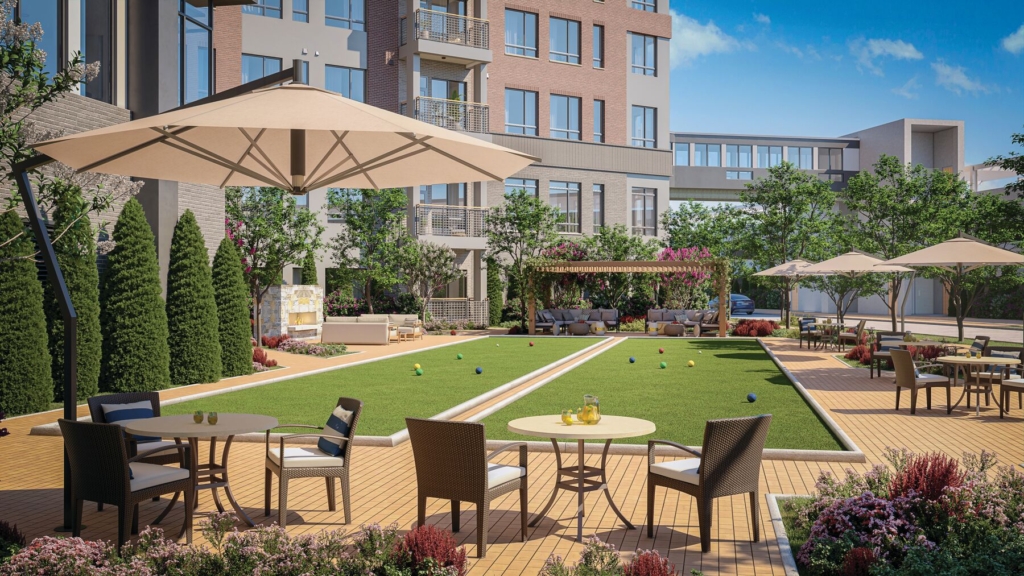
Conceptual images of the Grandview which is pending approval and subject to change. Images courtesy of Erickson Senior Living.
“Baby boomers are turning 65 at the rate of 10,000 people per day,” Sands said. “The U.S. population of seniors over 75 is expected to increase to 10 million by 2030 and 20 million by 2040, which we think obviously will drive the need for much more senior housing.”
That projected growth carries major implications for developers, builders and operators of active adult, independent living, assisted living, nursing care and memory care properties (and continuing care communities that combine those services). It also impacts the broader commercial real estate world as senior living properties increasingly seek to locate on prime sites within urban and suburban communities and close to retail, medical and transportation amenities.
The next few years of that growth path, however, are expected to be bumpy.
“It’s a crazy market right now,” said Bud Grove, Senior Vice President of Senior Living at Wohlsen Construction Company.
Two competing forces are straining the market currently. On the one hand, escalating prices for construction materials and equipment, labor shortages, supply chain delays, interest rate increases and heightened caution among equity investors and bankers “are killers. They are causing many jobs to slow down,” Grove said. “But that’s sentence one in the presentation of this crazy dynamic. Sentence two is get ready because there is a big boom coming. Baby boomers are not quite ready for senior living communities now but I keep hearing that in 2025, demand will jump and we will see five to six years of growing demand.”
One analysis concluded that among Americans 72 or older with sufficient income to move into a seniors community, “nationwide, we have only built out enough space for 18 percent of that group,” Grove said.
Consequently, senior living developers and operators are advancing an array of new construction and renovation projects.
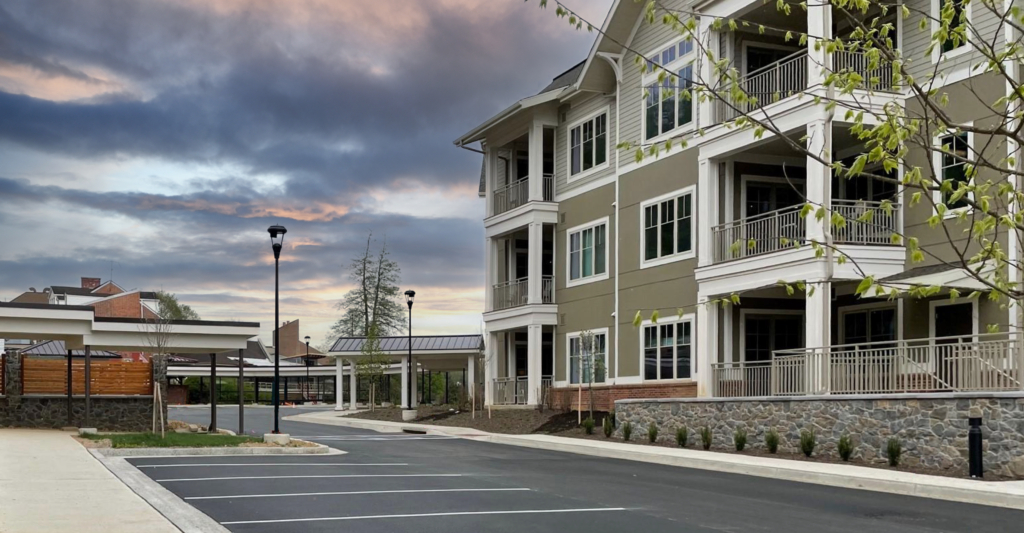
To keep up with demand, Broadmead Senior Living embarked on sweeping renovations of its residences and common areas. Photo courtesy of Wohlsen Construction.
Erickson’s fully funded expansion also includes plans to break ground in two years on a new, 62-acre development near MD Routes 32 and 108 in Clarksville. The community is slated to include 1,200 independent living apartments, 240 assisted living units as well as memory care and skilled nursing care beds.
In addition to the $4 billion plan, Erickson has already undergone renovations at its three existing Maryland communities to remain attractive and competitive. It has transformed large dining facilities into a variety of more intimate venues with different concepts and menus; updated fitness centers, aquatic centers and clubhouses; and embarked on extensive outdoor projects, including the installation of walking trails, outdoor fitness equipment, firepits, pavilions, outdoor dining spaces and, of course, pickleball courts. Renovation work at Charlestown on its continuing care buildings alone has totaled $80 million.
Meanwhile, Brightview Senior Living raised $202 million late last year from 363 investors to cover upfront construction costs on eight to nine new senior living communities over the next three years. Nonprofit communities, such as Broadmead, embarked on extensive renovations of their residential units, amenities and outdoor spaces. Some operators have sought to expand successful facilities that are witnessing growing demand.
In Queenstown, Md, Chesapeake Contracting Group is currently building a 17-unit addition to Queenstown Landing – an assisted living facility developed by SHA Capital Partners and operated by IntegraCare. Chesapeake built the original, 51-unit property “but it was such a hit that they needed to expand,” said Michael Wildey, Vice President of Chesapeake. That success, however, comes with a challenge, namely trying to fit more units on a largely utilized site.
Site challenges are becoming a more common aspect of senior living developments as developers target prime urban and suburban locations.
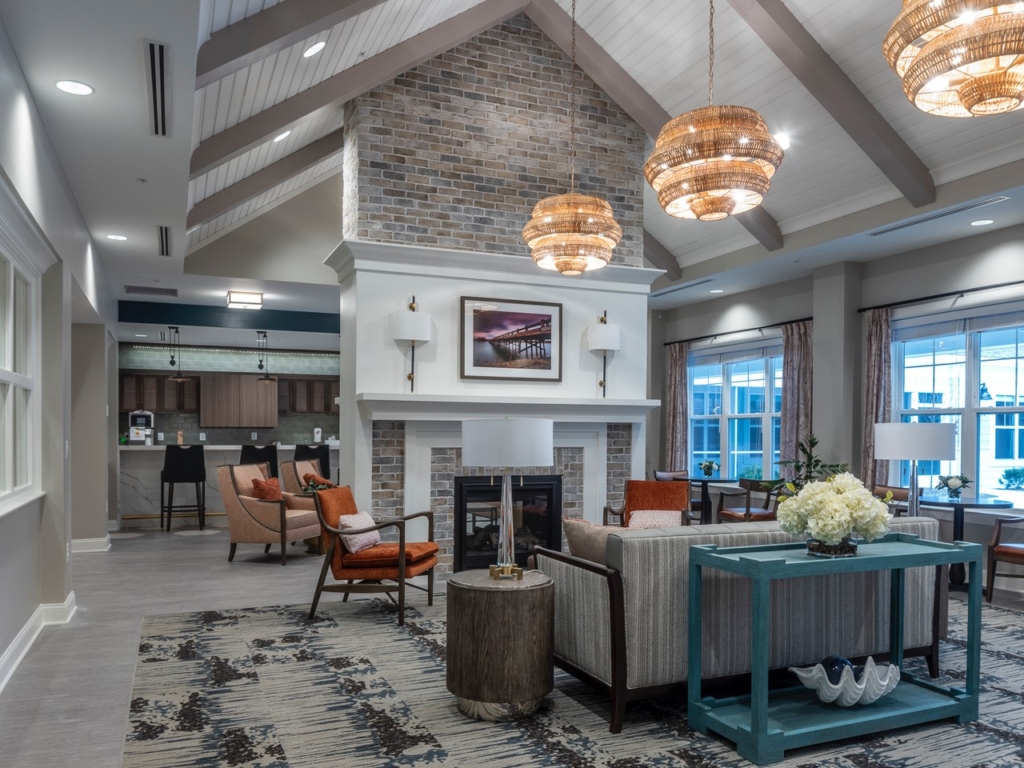
IntegraCare contracted an expansion of its Queenstown Landing property. Photo courtesy of Alan Gilbert Photography.
“Nobody wants to build in the middle of nowhere,” said Casey Hughes, Vice President for Senior Living at Harkins Builders, which has completed about 20 projects for Brightview. “One big trend we are seeing is developers looking for really desirable locations that currently have another use, like mall parking lots, parts of college campuses or church grounds that aren’t fully used.”
Early this year, Brightview announced plans to build a 171-unit senior living community on a 3.7-acre parcel of the Notre Dame of Maryland University campus.
Harkins is currently building a six-story, 300,000-square-foot Brightview community on part of the Hunt Valley Town Centre parking lot. Positioned behind the movie theater and close to Wegmans, the community will place a new population of active seniors “within walking distance of 15 restaurants, a grocery store and other retail,” Hughes said.
“The days of finding nice, clean land without complications for these projects are gone,” Grove said.
“But overcoming those complications can produce really impressive results and the kinds of projects our senior living clients want,” said Eric Arcudi, Senior Director of Development for Wohlsen.
Near Kensington Town Center, Wohlsen built Modena Reserve, a 167,000-square-foot, 132-unit complex that offers independent living, assisted living and memory care. The site backed up to a rail line, necessitating considerable noise-control measures. Two portions of the property – a former gas station and lumberyard/hardware store – also fell within Kensington’s historic district.
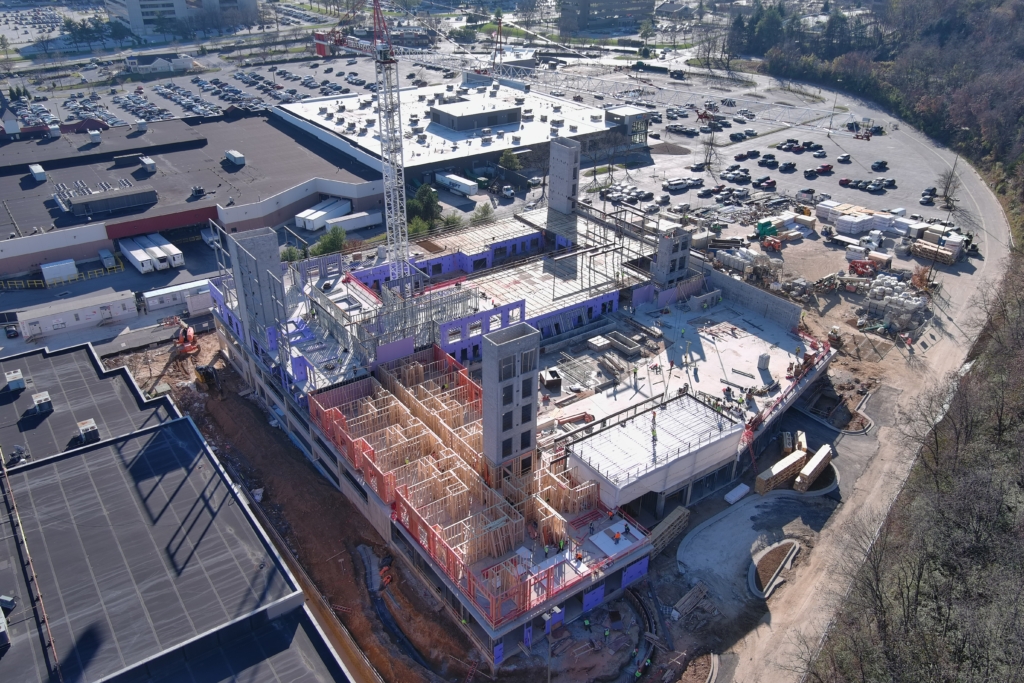
On a portion of the Hunt Valley Town Center parking lot, Harkins is building a new Brightview Senior Living community. Photo courtesy of Harkins Builders.
“So, the old gas station is now a coffee shop and the lumberyard/hardware store is now Modena’s spa and exercise room, which is connected to the main building. It turned out to be a really attractive project,” Grove said.
Enabling senior living developments to move forward amid ongoing high costs and high interest rates will require significant efforts from project teams.
Chesapeake Contracting urges its clients to engage in a comprehensive preconstruction process that starts with contacting Chesapeake when the developer identifies a potential site.
“We can typically give them parameter budgets so they can run their pro forma,” Wildey said. “We want to be sitting at the table through the entire process to work with the owner and design team to ensure constructability, look at materials and value engineering, watch prices and lead times, provide interim budgets and make sure there are no surprises.”
The ability to keep costs down and keep projects affordable played a key role in the decision this year by the National Association of Home Builders to award the Best of 55+ Housing Silver Award to Brightview Fair Oaks – a 170-unit development built by Harkins. The award announcement described Fair Oaks as “a prime example of how an ambitious client and imaginative design can create something special out of basic ingredients.”
The project team saved money by restricting high-end finishes to high-visibility, high-use areas, Hughes said. Meanwhile, the design also made optimal use of space by ensuring that several separate rooms – a dining room, pub, café, games room and serving kitchen – could also be opened up to create one large event space.